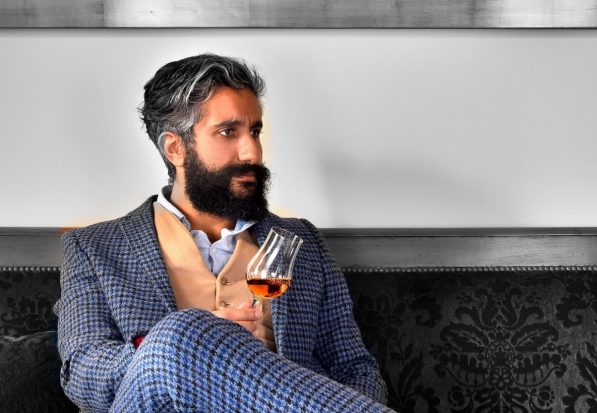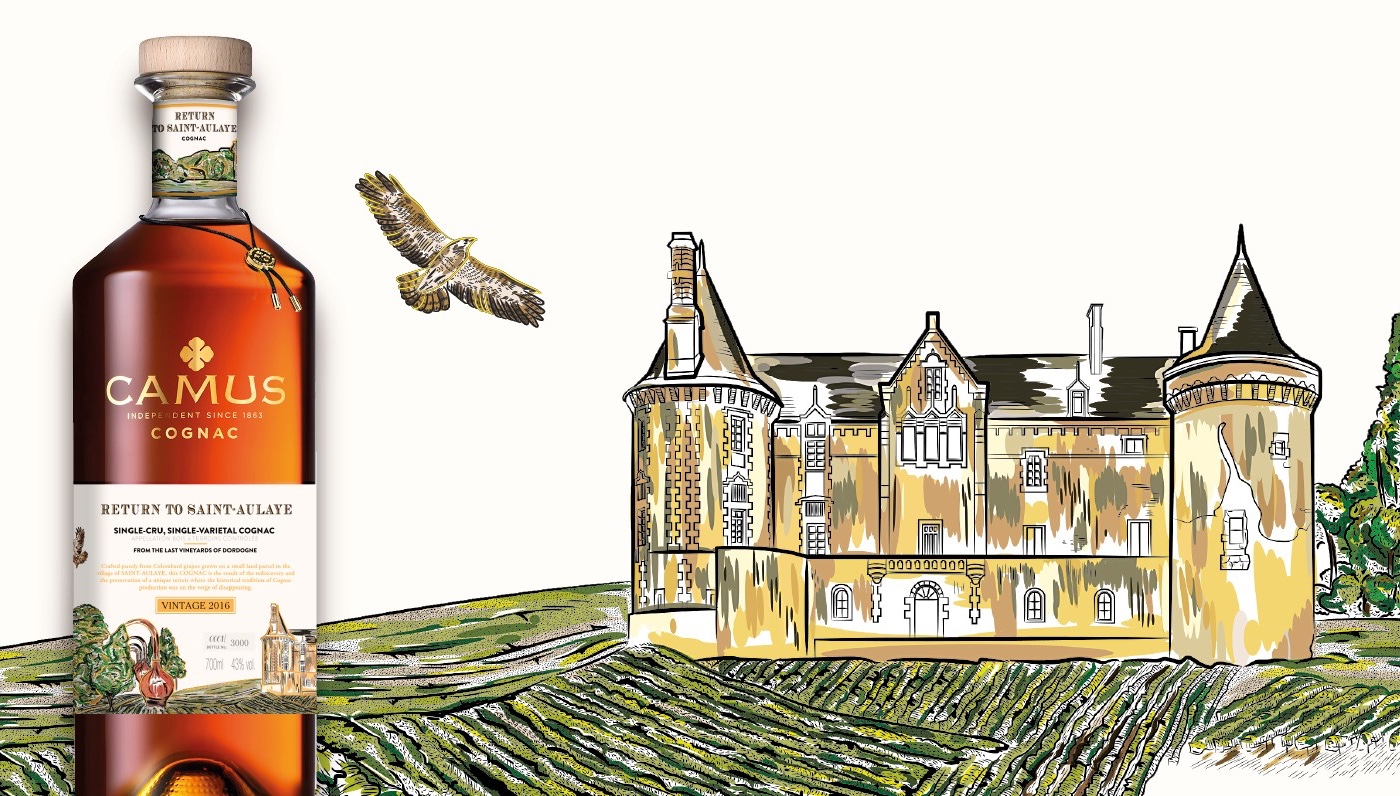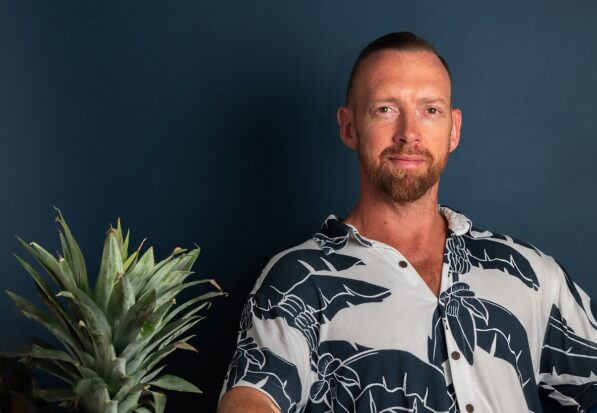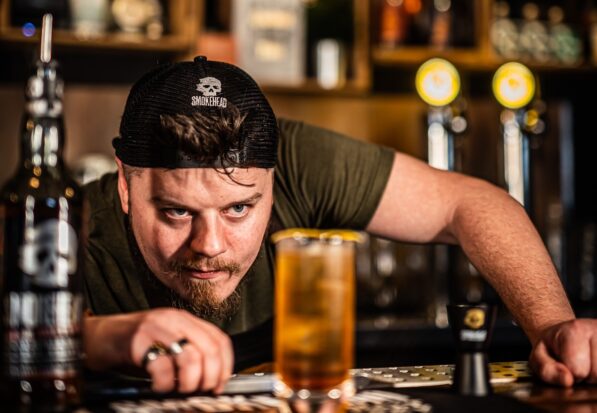French cognac brand, Camus, has long been known for its desire to explore fascinating and inventive new takes on cognac tradition.
Their latest release takes connoisseurs of the spirit to the small village of Saint-Aulaye, located in the Périgueux district of Dordogne.
We speak to Pier Paolo Catucci, the global brand manager of Camus, about this very special, limited-release expression, why it was created, and how it should be drunk.
For more information go to camus.fr or connect with the brand on Instagram
Interviewer:
French cognac brand, Camus, has long been known for their desire to explore fascinating and inventive new takes on cognac tradition. Their latest release takes connoisseurs of the spirit to the small village of Saint-Aulaye, located in the Périgueux district of Dordogne. We speak to Pier Paolo Catucci, the global brand manager of Camus, about this very special, limited release expression, why it was created, and how it should be drunk.
Thank you for joining us, Pier.
Pier :
Thank you, Tiff, for inviting me.
Interviewer:
I thought we might start by asking you to describe the namesake of this expression, the village of Saint-Aulaye.
Pier :
Sure. This is a very unique, very picturesque village, which is nestled in the Dordogne region, as you were saying. It's a region which is very well renowned for the gastronomic offer. For example, beautiful landscape, beautiful architecture, and the Saint-Aulaye village is no exception to that. Now, something that not many people know is that this specific part of the region, it's part of the cognac appellation. And historically, cognac production was quite a thing here. Then there was a moment, specific moment in history, when the production of cognac here was on the verge of disappearing. And our mission to sort of revive this tradition in this territory.
Interviewer:
The village has put 1.5 hectares aside to grow grapes for cognac. Why was this important to them?
Pier :
Well, I think first of all, it was very important to understand which were the areas, which were relevant for viticulture and ester in this region. And specifically for viticulture, which aimed at cognac production. So, it was a sort of giving back to nature, what was taken at the certain point in history. And then, this collaboration we had, this commune with the town council of Saint-Aulaye, it's a sort of a common mission to safeguard, to keep this tradition rooted in the territory. So, I think planting vineyards, in a sense, it's already a very good act of giving back to nature.
Interviewer:
Through history, how important has the Dordogne region been to cognac production?
Pier :
It was quite important, I would say. In the 20th century, this region was home to some 60 wine growers and cognac producers. So, I must say that people, when we scoured the archives and we checked for data and information about the historic production here, this region is always mentioned. It was even part of the tracks of cognac production in this region even before the appellation was created. So, we know for a fact that cognac production was very important in this area.
Interviewer:
Why do you think the area lost its cognac vineyards?
Pier :
Well, I think it's a combination of factors. The first of all, is that other growth areas in other part of the appellation emerged as more appealing for the end consumer as Gran Champagne or Petite Champagne. So, some of the planting rights were moved from this region to other regions, which were more appealing on a label. And then, other type of cultivation, more profitable, with more short term return, then a general change in the agricultural landscape, I would say. So, I would say a combination of factors.
Interviewer:
Why was this project of interest to Camus, then?
Pier :
Well, I think in our DNA, as a brand, we feel the urge of finding through expression of the terroir and just sort of show to cognac lovers and any sort brown spirits aficionados to show the different expression, which we can have when we move in different areas of the appellations. And in the end, we want to supply very aromatic cognacs. So again, we need to do some research. And so, it's part of this innovation principle, which always goes back to looking at the tradition, looking back at what was done in the history, and what was at a certain point lost, in order to revive these type of practices. So, it is a little bit what we call the science of tradition. So, staying at the forefront of science in terms of study and research. At the same time, look back at what was done by our ancestors and bring up innovation for people who are curious to know more about the cognac versatility.
Interviewer:
How did Camus actually get involved? Were they approached by the village, or did you hear about what they were doing and you approached them?
Pier :
We were approached by the village. So, the town of Saint-Aulaye and the person of the mayor, in 1999 and 2000, they collaborated with the local producers, which makes wine in general, to replant these 1.5 hectares of vineyards. And then, they went out looking for a cognac house which would support them. And I think the size of our cognac house, and also our effort in the market to produce innovation, in a sense, it was a sort of a trigger for them to contact us.
Interviewer:
Can you describe the nose, the palate and the finish the drinkers should expect from this expression?
Pier :
So, when you open up the bottle and you pour it in your glass, you have this shiny, golden colours with amber highlights. So, it's very brilliant coloured. And on the nose, it's just a true explosion of fruity notes. Some you would expect, like pear, some which are more exotic like pineapple, for example. And then there's a touch of spice at the second nosing. And then, when you put it on the pallet, you have this warm and lavish [inaudible 00:07:29] aromas. And again, some hints of spices like gingery notes, and then walnuts with a very soft texture.
Interviewer:
If someone is a cognac connoisseur, is there something about this expression that will surprise them?
Pier :
Well, absolutely. It's a very unusual expression of cognac, I think. It's more mellow. It's softer. It has a sort of more velvety texture. It's less harsh than what we would expect, less vibrant than a standard VSOP, four years age. It's definitely an unusual expression of cognac.
Interviewer:
Now tell us a little something about the grape varietal that was used.
Pier :
Yeah, it's a grape varietal which is called Colombard. It's a very rare grape varietal in the appellation. Only 1% of the total appellation is covered with the Colombard. The rest is a Ugni Blanc, so it's a more predominant grape variety.
Despite the low yield, it's a very aromatic, very fragrant grape variety, which gives very floral wine, so it's very interesting to use.
Interviewer:
Was the village at all worried that having such a small plot and a grape varietal that does traditionally have such a small yield, that the project wouldn't really succeed?
Pier :
Well, I think it's in the interest of everyone to, not to make it a big, huge project, but to keep it at the village size. In a sense, if we had the big, big extension, it would collide with the concept of having a true expression of the small terroir and a neglected terroir. So, I think we want to keep it at the very human size.
Interviewer:
Which do you think has more impact on the taste, the barrels, the grapes, or the area's terroir?
Pier :
I think it's a combination, once again. The raw material is very important. The very romantic wines, the kind of distillation we are doing, and then the unique varietals that we're using for the aging. So, it's more a combination of different factors.
Interviewer:
Do you think that the success of this expression will encourage others in the area to reignite the old cognac tradition?
Pier :
I think so. I think it might be the right trigger to make people understand the importance of a variety of terroir. And I will be very pleased if this happens, actually. If some other cognac producers even look at this kind of terroir, because it's quite unique.
Interviewer:
Now, can you walk us through the timeline of this project? When it started and what milestones it's hit?
Pier :
If you look back at when the vineyards were planted, this is 1999, 2000. Then, we started the first test and experiments when the vineyards became productive. The first bottling was made with a 2015 distillation. So, 2015 was the first vintage distilled. And this year, we are releasing the final expression, which is the one we really feel is representative of the project, which is the 2016. So, it's more than two decades, actually.
Interviewer:
At what stage did Camus step in? Was it only once the grapes were harvested? Or have you been working with the village since the grapes were planted?
Pier :
It was before. Not since the vineyards were planted, but somehow we started to talk in 2010, 2011.
Interviewer:
Now, this is obviously a fairly long term project for Camus to be involved in. How did they know it was going to be a success?
Pier :
Well, I think whenever you are offering something which is new, which is the true expression of a terroir which was almost forgotten, which is relevant from the point of view of taste, because it has a strong taste credential. I think you cannot fail.
Interviewer:
Now, does Camus often get involved in projects like this?
Pier :
Yes. I mean, we are recognised to be the first producer of cognac from the Île de Ré. So, the island off the west coast of the appellation, which produced very unique, naturally iodine rich wines and therefore cognac because of the influence of the ocean. We produced the first cognac with an oceanic and tropical maturation, which is called Caribbean Expedition, which spent a year of further maturation in Barbados in order to offer a sort of different experience in comparison with the standard continental climate maturation.
And we are the universally recognised producers of a single estate range from Borderie, which is the smallest crus in the appellation. But again, one of the most coveted because of the floral aromas it gives the cognac, so I think we have strong credential in this direction.
Interviewer:
Aroma and terroir are two factors that are very important to your brand, are they not?
Pier :
I think it is one of the most important aspect. We want to produce intensely aromatic cognac. And so, we want to be recognised by scientific evidence as the producer of the most aromatic cognacs in the category.
It's been since at least 15 years, we have created this patented technique of distillation, which is called intensity, so it's a patented technique, which allows us actually to select the most aromatic fraction of the distillate out of the first 20 litres during the second distillation. So, this is what traditionally we call heads. And we select the most aromatic manually, the most aromatic of these 20 litres. And we add them to the final eau de vie, to the final distillate before ageing. And this actually allows us to have up to 250, 300 milligrams per litres of esters in our final distillate, which is up to seven times higher in comparison with the standard distillation.
Interviewer:
Getting back to this expression, I assume that's the method that you used with this particular varietal?
Pier :
Yes, we did. So, the harvest of the graves happen in September. We fermented, and we produced the wine. And then, since we had a very aromatic wine with very strong concentration esters, we didn't wait for the malolactic fermentation to happen. And we passed straight away to distillation. So, for this specific product, at least 10 litres of the heads were selected and added to the final distillate.
Interviewer:
Now, I believe the distillate was eight for four years. Why did you choose that length of time?
Pier :
I think four years of ageing allow you to have a sort of already mature cognac, a little bit more fine and elegant, but at the same time, it preserves the vibrant aromas of the raw material. So, the wood doesn't have a stronger impact than the terroir.
Interviewer:
The wood that you're speaking of, I believe the barrels came from the forest of Double. I believe some of them were new made, while others held Monbazillic wine. Is that correct?
Pier :
That's correct. So, it's very important to use local wood, because it's sort of revives the tradition of using traditional woods coming from this forest, which is just next door to the village of Saint-Aulaye. It has a very unique texture. It's a fine grain wood, which allows a very mellow maturation. It gives a sort of very smooth texture to the final cognac, and yes, 50% new. 50% used in order to have this sort of a combined effect, not to have too much of an impact from the wood.
Interviewer:
And how did you come to that balance?
Pier :
I think it was trial and error process. I think after many, many experiments that we conducted, we found these to be the better balance.
Interviewer:
Now, the release, I believe the barrels were stored in one of the towers of the 11th century Saint-Aulaye castle?
Pier :
Yeah.
Interviewer:
It seems a rather fancy place for the barrels to be resting.
Pier :
Indeed. So, basically, the castle happens to be also the town hall of the village. So, it's where the office of the mayor is. This is a very picturesque place. So, it's on top of being a very good place for maturing cognac, because of the humidity and the temperature inside, it is also a very good place to show to journalists or any tourist which is passing by to show that actually the story is true, that the cognac, which is raised locally, it is stored in the castle. The village is very small, so people like to see things like that. So, it was quite natural for us to leave the cognac maturing there.
Interviewer:
And I suppose the barrels were only moved at the point where you were bottling them? Is that correct?
Pier :
Yeah, absolutely. Yeah, absolutely.
Interviewer:
Now, if someone is familiar with the other expressions that your brand has released, how will they find that this one differs in taste?
Pier :
I think it's in comparison with a core range VSOP or a Borderie VSOP. This is a more soft, more sweet and fruity expression of cognac. So, it is a very good variation on a VSOP quality. So, if someone wants to have quite some variety in his spirits cabinet, he should definitely add this bottle.
Interviewer:
Would you say that it's more of an after-dinner sort of cognac?
Pier :
It can be an after dinner. If you want to drink it with cheeses, for example, would be very nice, but even with a dessert, then it can easily become an aperitif. For example, if you drink it with some ice and pairing it with crouton on with foie gras, for example, that will make a very fancy aperitif. Very good. Very good. On top of that, foie gras is from the region.
Interviewer:
What other cocktails would you suggest that people could make with it?
Pier :
I suggest not to add many ingredients, so you can have a very, very nice twist on an Old Fashioned, for example, replacing the whiskey or the bourbon, depending on what people like. With the cognac, with the Saint-Aulaye, don't need to add sugar. You just add some cube of ice dilute it, so stir it with your cup, teaspoon, and then maybe add some bitters, if you want to add some spicy notes, a twist of orange, maybe. That's it.
Interviewer:
What other flavours do you think work well and bring out the best of this expression?
Pier :
What about citrusy flavours? Maybe whatever its features could come along very good, or a sour part. So, whatever adds up the sour side and counterbalance the fruity notes.
Interviewer:
Can you talk a little bit about the label art?
Pier :
Yeah, sure. This was designed internally. And we were really much inspired by the landscape of Dordogne, so we want to really to draw a typical site scene in the village from different perspectives. So, you have the castle. You have the vineyards. You have the 45 walls, and then you have the river, the Dronne, which is just by the village. So, you see the Roman bridges and the small boats, which are crossing the river, and then adding some typical elements, which recalls the distillation, like the pot still or the ageing, like the barrels.
Interviewer:
When people drink this, what do you imagine they will take away from it?
Pier :
I think that it is a very good experience for someone who wants to understand what is the relation between a terroir and the cognac, so I will be pleased if people go and do some research more about the village, and maybe one day, who knows, happen to visit the village, and they will reconnect the typical flavours of the cognac with what they see in this village, in this region in general.
Interviewer:
Do you think it's a good beginner's cognac?
Pier :
Maybe, but it can also be a cognac indicated for a brown spirits lover in general. So, even if someone is not that acquainted with cognac, it can be a bridge to the cognac category for someone who drinks usually whiskey or rum.
Interviewer:
Right, okay. Now, this is the first commercial expression from this area. Will this be an annual release?
Pier :
Hopefully, yes. I mean, if the quality allows us, of course, we're very focused on the quality of the product, and there's a strong vintage effect on this product. So, if the quality stays high as it is, yes, we are looking at having a yearly release.
Interviewer:
Were you surprised at how high the quality was from this tiny plot of land?
Pier :
Definitely. I'm really positively surprised. Everyone was. Our master distiller, the people from Saint-Aulaye. I mean, this is a very outstanding expression of cognac.
Interviewer:
I believe that there are only 3000 bottles released. Can you explain the process that people should do to get their hands on a bottle?
Pier :
Yeah, so we are starting our official pre-sale on www.camus .fr from April the 2nd. And for the first days of the pre-sale, we're going to have a very special promotion, where we offer shipments worldwide. And we gift two tulip glasses, to enhance the experience. The pre-sale will last from the 2nd of April until the 25th of April. So, once again, on www.camus .fr, and then the cognac will be available in selected retailers across our specialist distributors worldwide.
Interviewer:
If people want more information, they can of course go to your website, which is again, camus.fr, or connect with the brand or on your socials.
Pier :
Of course. And our Instagram page, which is Camus Cognac.
Interviewer:
Thank you very much for joining us, Pier.
Pier :
Thank you very much, Tiff. Thank you for having me.









